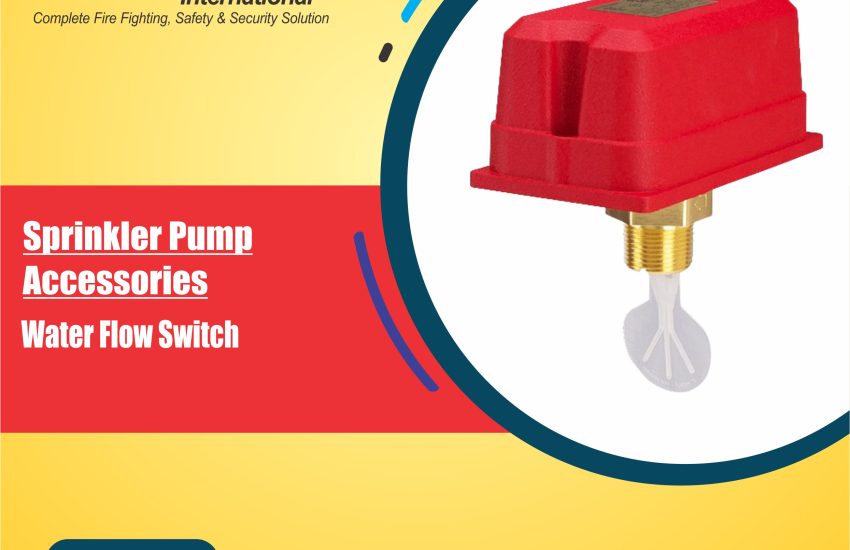Water Flow Switch are crucial for maintaining the reliability and safety of water flow in plumbing systems. These devices monitor and control water flow, protecting systems from potential damage caused by low or no-flow conditions. This guide explores the water flow switch, its usage, compatibility with various pipe materials, and its specifications for flow sensitivity, pressure rating, and approvals.
Key Features and Specifications of Water Flow Switches
Compatible Pipe Materials and Sizes
Water flow switches fit various pipe materials and sizes, making them versatile for different applications. The following are the compatible pipe types and sizes for the listed water flow switch:
- Plastic Pipe (Schedule 40)
- Copper Pipe
- Schedule 40 Iron Pipe
This flow switch is compatible with these pipe sizes:
- 1-inch (1”)
- 1 1/4-inch (1 1/4”)
- 1 1/2-inch (1 1/2”)
- 2-inch (2”)
These compatibility options allow for easy installation across many plumbing systems. You can confidently integrate the flow switch into most setups for accurate water flow monitoring.
Flow Sensitivity Range
The water flow switch has a flow sensitivity range of 4-10 GPM (15-38 LPM), making it ideal for detecting flow rates within this range. This feature ensures that the flow switch activates when water flow falls within the specified range, triggering alarms or controls as needed. You can rely on the switch to maintain optimal performance for applications requiring precise flow monitoring.
Pressure Rating
This water flow switch can handle static pressure up to 375 PSI, which ensures its ability to withstand demanding environments. The high-pressure rating guarantees the switch remains reliable even when subjected to extreme water pressures. By offering this impressive pressure tolerance, the switch proves useful in systems where water pressure can fluctuate.
Weight and Construction
The flow switch weighs 2.95 lbs (approximately 1.34 kg). Its lightweight design simplifies installation, while still offering durability. This makes it a practical solution for those seeking both ease of handling and strong performance.
UL and FM Approved
The flow switch carries UL (Underwriters Laboratories) and FM (Factory Mutual) approvals, signaling compliance with the highest safety and quality standards. These certifications ensure that the flow switch meets rigorous testing for performance, safety, and reliability. You can confidently install it in both commercial and residential settings, knowing it meets industry standards for reliability.
Usage in Critical Applications
Water flow switches are essential for various applications, such as:
- Fire Sprinkler Systems: The switch ensures water flows properly for fire suppression.
- Cooling Systems: It protects pumps and equipment by monitoring water flow.
- HVAC Systems: It helps maintain stable water flow for heating, ventilation, and air conditioning units.
- Water Treatment Plants: It monitors water flow during filtration and treatment processes.
Accurate flow monitoring prevents system failures and protects equipment from damage, ensuring the smooth operation of essential processes.
Installation Guidelines for the Water Flow Switch
1. Pipe Selection
Before installing the water flow switch, make sure to choose the correct pipe size (1”, 1 1/4”, 1 1/2”, or 2”) and material (plastic, copper, or Schedule 40 iron) based on your system needs. This ensures the flow switch fits properly, creating a secure, leak-free installation.
2. Installation Location
Place the flow switch in a location where water flow is stable and consistent. Avoid installing it near bends or valves, as these areas can create irregular flow patterns that could interfere with the switch’s performance. Ensuring a smooth flow will result in more accurate monitoring.
3. Pressure Considerations
Ensure the system does not exceed the maximum static pressure of 375 PSI. The flow switch is designed to handle pressures within this range. Operating it at higher pressures may cause damage or prevent it from working properly. Always verify the pressure before installation.
4. Electrical Connections
If you’re working with an electric flow switch, ensure proper electrical connections according to local codes. Incorrect wiring can cause the flow switch to malfunction, which could lead to inaccurate readings or system failure.
Conclusion
Water flow switches are essential for monitoring flow in systems ranging from fire protection to industrial cooling. The UL, CUL, and FM-approved flow switch works with pipe sizes between 1” and 2” and fits plastic, copper, and Schedule 40 iron pipes. With a flow sensitivity range of 4-10 GPM (15-38 LPM) and a static pressure rating of 375 PSI, this flow switch offers excellent performance across a variety of applications.


